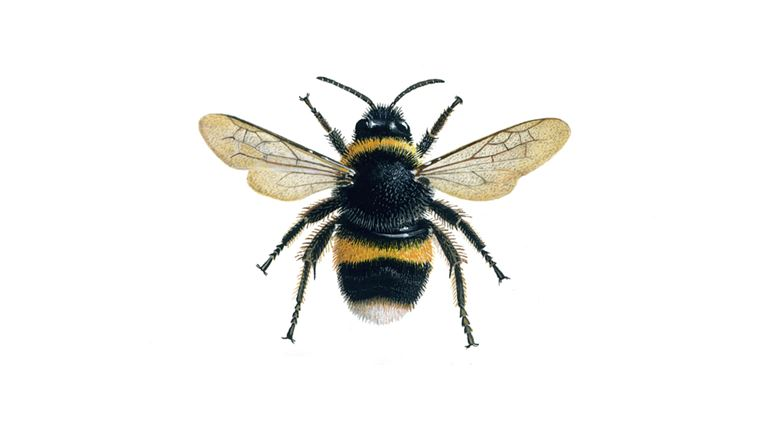DAY 2: The Air Up There
Activity 1: Bee Informed [4 points]
One of the most important, but least talked about, animals in New Zealand is the bumblebee. It was first introduced to New Zealand in 1885 to help pollinate a special plant called the ‘Red Clover.’ Today, bumblebees do many other important jobs, including the pollination of greenhouses and orchard crops. If the bees did not pollinate the plants, they would not survive.
For this activity, we would like you to become detectives and learn more about the mysterious, and often ignored, bumblebee. We will provide you with four sentences about bumblebees from the NZ Bumblebee Conservation Trust website and it is your job to fill in the blanks with the missing information.
On your blog type out the four ‘Unbee-lievable Facts about Bumblebees’ and fill in the blanks for each one.
Unbee-lievable Facts about Bumblebees
- The word ‘bumblebee’ is a compound word (bumble + bee). The word ‘bumble’ means to hum, buzz, drone, or move ineptly or flounderingly.
- Bumblebees can fly very quickly. They can reach ground speeds of 15 kilometres per hour (km/h).
- Bumblebees can do more work and carry more pollen than other bees, including honeybees. In fact, they can do 50 times as much work as a normal honeybee.
- The number of bumblebees is declining in New Zealand due to a number of factors, including industrial agriculture and climate change . [insert any two causes of the declining number of bumblebees].
Activity 2: Carbon Sinks Don’t Stink! [4 points]
Every day a chemical compound called carbon dioxide (CO2) is produced and released into the air. If it isn’t removed, it can become toxic for humans. Fortunately, there are a number of places where CO2 is absorbed (removed from the air). Two of the most common places are forests and oceans. They are called ‘carbon sinks’ because, like a sink, they gather, clean and drain things away that we don’t want. One of the largest carbon sinks in New Zealand is a forest in the south-western part of the South Island. It drains away 60% of our unwanted carbon!
Let’s imagine that you could design a sink that could gather up and then drain away any foods that you don’t like. On your blog, tell us what you would put in your special sink. If it was me, I would put rice pudding, brussel sprouts, custard, parsnips, and seafood chowder in the sink. Yuck! What about you?
On your blog, list all of the foods that you would put in your special draining sink.
A list of all the food I would throw away in to my special draining sink. (All the foods I don't like)
- Eggplants
- Mashed Potato
- Peas
- Peppers
- Rock Melons
- Pumpkin
- Cumber
- Zucchini
Activity 3: Flying Fungi [10 points]
In the middle of winter it can get quite wet and damp in New Zealand, can’t it? When it gets really damp, it is common for things like mould and fungi to start to grow. We can often see them on the walls, ceilings or floors of our houses or outside on footpaths, buildings or roadways. Some types of mould and fungi are so small that they can’t be seen. Some of these tiny fungi/mould can be found in the air. They are called ‘airborne fungi’ and they can be unhealthy for us.
Let’s imagine that we tested the air in your classroom and found 7 different kinds of mould. Eek! The cleaner says that it takes 5 days for each mould to be eradicated (removed). If the school had to remove each mould one at a time, how long would it take to remove all the mould from the classroom?

Kia ora Siosaia,
ReplyDeleteMy name is Mikey. I'm a member of the Summer Learning Journey team (SLJ), along with Patricia, Sophie, Izzy and Lee. I'm so glad to see that you took part in this year's programme and kept your literacy learning going throughout the summer holidays - well done! :)
Well done on giving the bumblebee activity a go - they're amazing little creatures aren't they? It looks like you've actually missed one of the sentences as well as the list of words/phrases/numbers that have been provided for you. If you go back to the SLJ website and have another read of this activity, you'll see that we've given you what you need to fill in the blanks. Have another go and I check back in soon. :)
Wow, that's quite a few vegetables you'd be getting rid of there. What is it about pumpkin that you don't like?
Great work on solving the 'flying fungi' maths problem. You've chosen a great strategy and shown your working out in a way that's easy to understand - he whetu koe! (You're a star!) :)
Keep up the great blogging Siosaia! :)
I am really surprised by the quality of your constant posts.You really are a genius, I feel blessed to be a regular reader of such a blog Thanks so much..Plz Visit My Blog-
ReplyDeleteOnlinekaj.com
Mobile-price-bd.com
Redmi Note 8 Price in Bangladesh